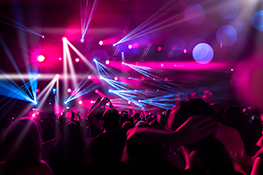Basic Theatre Lighting Techniques for Beginners
Lighting is a crucial element in theatre, shaping the mood, atmosphere, and storytelling of a production. Even if you’re new to stage lighting, understanding the basics can make a significant impact on the quality of your show. This article will guide you through essential theatre lighting techniques, providing valuable insights for beginners.
Understanding the Basics
Light Types
Several types of lights are commonly used in theatre. These include:
- Fresnel: Produces a soft, even beam of light ideal for washes and general illumination.
- PAR Can: Throws a wider, more intense beam of light, often used for effects and backlighting.
- Ellipsoidal Reflector Spotlight (ERS): Creates a sharp, focused beam, perfect for highlighting actors and specific areas.
- LED: Offers energy efficiency and a wide range of color options, suitable for various applications.
Lighting Positions
Understanding basic lighting positions helps create effective lighting designs. Common positions include:
- Front Light: Illuminates the stage from the front, providing general illumination and highlighting facial features.
- Side Light: Lights the stage from the sides, creating depth and dimension.
- Back Light: Comes from behind the actors, adding separation from the background and creating a sense of depth.
- Top Light: Placed above the stage, casting a general wash of light or highlighting specific areas.
Creating Visual Interest
Color
Color plays a significant role in theatre lighting. Different colors can evoke emotions, enhance moods, and highlight specific elements.
- Warm Colors (Red, Orange, Yellow): Convey warmth, energy, and happiness.
- Cool Colors (Blue, Green, Purple): Create a sense of calmness, sadness, or mystery.
Intensity
The intensity of light can significantly influence the audience’s perception.
- High Intensity: Used for dramatic moments, highlighting important characters, and creating a sense of urgency.
- Low Intensity: Creates a sense of intimacy, mystery, or moodiness.
Focus
Focus determines the sharpness and direction of the light beam. Tight focus highlights specific areas, while soft focus creates a more diffuse and even illumination.
Key Lighting Techniques
Motivated Lighting
Motivated lighting simulates the source of light within the play’s environment. This can be achieved through:
- Practical Lights: Lamps, chandeliers, or other onstage light sources can be used to create a sense of realism.
- Moonlight or Sunlight: Simulating natural light sources to enhance the scene’s atmosphere.
Silhouettes
Silhouettes are created when light is placed behind an actor, obscuring their features and creating an outline. This technique is effective for conveying mystery or emotional states.
Cross-Fades
Cross-fades involve gradually transitioning between lighting cues. This technique helps create smooth transitions between scenes and enhances the flow of the production.
Tips for Beginners
- Start with a simple design: Focus on basic techniques and build complexity gradually.
- Experiment with different lighting instruments: Familiarize yourself with the capabilities of various light sources.
- Pay attention to color temperature: Ensure consistency in the color of light used throughout the performance.
- Communicate effectively with the director: Understand their vision and incorporate their input into the lighting design.
Conclusion
Mastering basic theatre lighting techniques is a rewarding endeavor that enhances the visual impact and storytelling of your productions. By understanding the fundamentals, you can create captivating and immersive experiences for your audience. Remember to experiment, learn from experienced professionals, and never stop exploring the possibilities of stage lighting!
Contact Us
For any inquiries or to explore our range of theatre lighting equipment, please contact us:
- Toll Free: 1800 200 6000
- Mobile: +91 90150 60000
- Email: info@stagelights.in


 Auditorium Construction Services
Auditorium Construction Services 